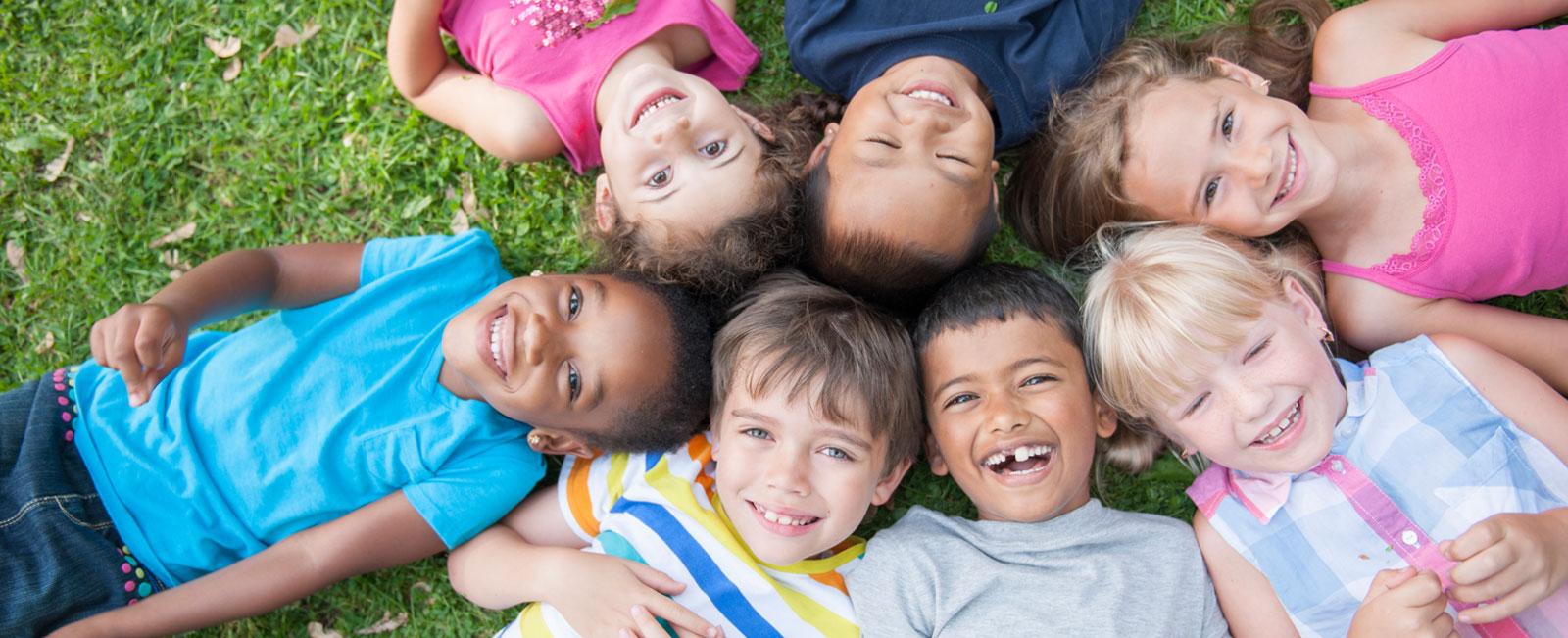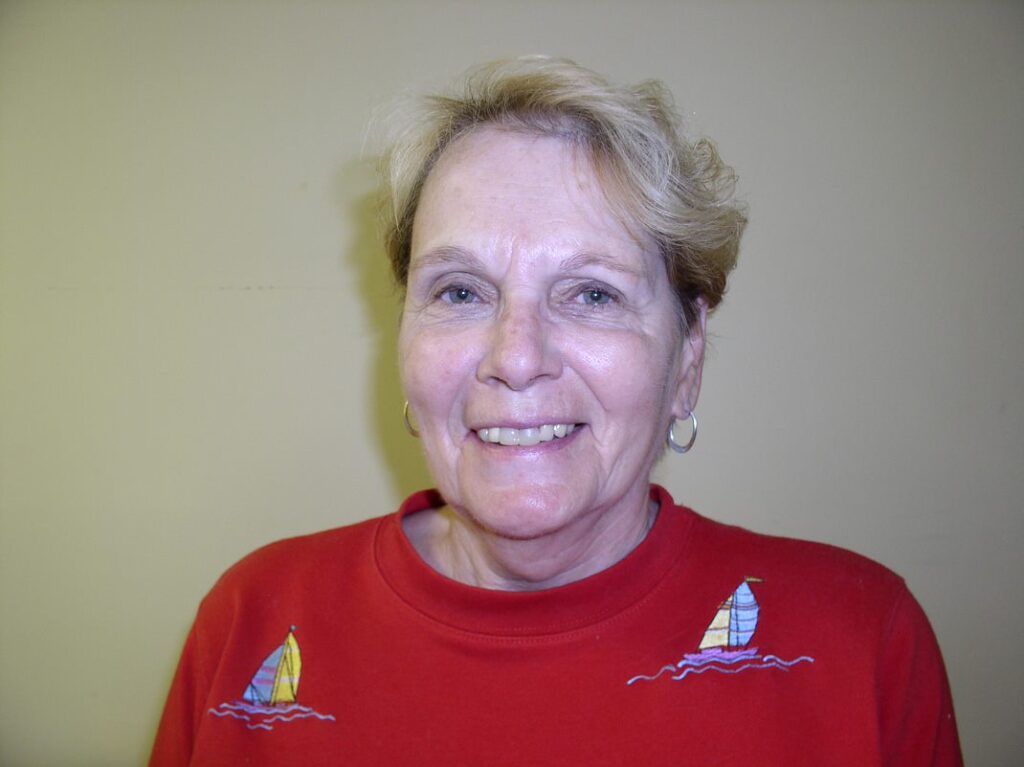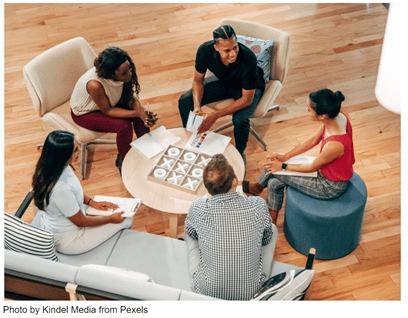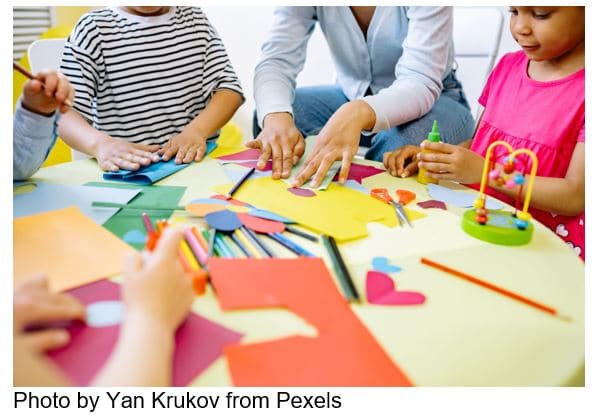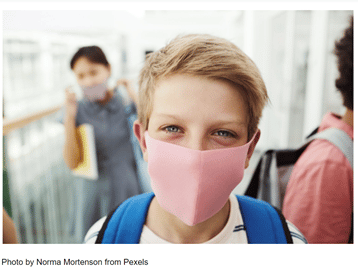
Written by: Christy S. Renjilian
Support. Meaningful support.
What does it look like for you?
In 2022, it’s an absolute necessity. For me, for you, for everyone in your life, particularly those who are caregivers, nurturers, and teachers.
Meaningful support lets you know you are seen and valued.
It aligns with your needs. Specific needs, because there is no one size fits all.
When things are hard and the struggle is real, that’s when you need it most.
Don’t know how to start providing meaningful support? Well, step one is to listen.
And listen deep.
When it comes to educators, it’s not offering them a gift card or telling them to practice ‘self-care.’ It’s listening to them and recognizing that teachers are emotionally and physically exhausted—like many others.
How are teachers feeling right now?
Many teachers are on the verge of burnout.
They are deeply worried about their students and doing everything they can to meet their needs. And many are working in environments with enormous pressure and impossibly high expectations.
Teachers hear about it from every angle, too.
Students are frustrated, trying to juggle it all and cross the finish line of yet another out of sorts school year.
Parents are worried, and many are expressing their fear in the form of anger in local social media groups, at board meetings, or in parent-teacher conferences.
Administrators and state officials are often consumed by standardized test scores and have lost sight of the fact that there hasn’t been a ‘normal’ school year for three years. They are failing to remember that if you don’t address the student’s emotional and mental wellbeing, serving the whole child, research tells us that they will struggle academically.
And teachers are feeling it all. And leaving the profession at a record pace. Brand new teachers and long-time teachers.
With a lack of meaningful support, there will be an ongoing staffing crisis.
We’ve all heard countless stories about the substitute shortage. Classroom upon classroom without a teacher or substitute to fill the role. So overstretched teachers and support staff are expected to fill in these spots. More work with fewer people.
Some teachers are demoralized—they believe they are unable to perform their work to the high standard they have. It goes beyond burnout.
What is a reasonable expectation for our teachers and students?
Look, it’s reasonable to expect teachers to do their best to address the needs of their students. To support them as the experts they are and allow them to nurture the whole child.
It’s not reasonable to expect the current third graders to be at the same level—academically, emotionally, or socially, as the third graders of the 2018-2019 school year, the last ‘normal’ year.
Let’s encourage teachers to focus on developing meaningful relationships with each of their students, discerning what they need, and aligning their curriculum to meet those needs.
For students, it’s reasonable to expect them to be open to learning, to engage emotionally, socially, and mentally throughout the day.
And it’s reasonable to expect both students and teachers to do the best they can given the circumstances. But this doesn’t mean that students or teachers have to be perfect.
We need to remind ourselves that ALL teachers and ALL students have been impacted by COVID. And that we are in the third year of an ‘adjusted’ school year. And it’s compounding, year after year.
As the adults in the system, we need to take a deep breath, pause, and be reasonable.
How do we turn care and compassion into meaningful, actionable support for teachers?
You’ve already started. Pausing to ask genuine questions—of yourself and the teachers in your life—is the first step. They are the experts in educating and guiding students, and they know what they need to do their jobs.
As a community, we can pause, ask questions, listen to the answers, and work together to implement their suggestions.
And if you want to go beyond that, we can truly express compassion for the education community. Here are a few more ideas to consider:
- As parents of school-aged children, we can remember we are equally responsible for supporting and educating our children—and then follow through to do our part. It’s seemingly mundane things, like regular bedtimes, monitoring homework completion, and attending parent-teacher conferences, that truly make a difference.
- As a community, we can celebrate progress. Let’s not compare grades or performance with those of a pre-COVID era. Understanding that each child, each teacher is doing his best and celebrating him for it.
- As administrators, school boards, state officials, and parents, let’s focus on the most important things. The health and well-being of the teachers and children. Both physical and mental.
- And let’s work together to give teachers the power, time, support, and freedom to do what they love to do: teach. And encourage and support a “whole child” philosophy of education, with brain breaks, mindfulness activities, and check-ins.
- Let’s protect planning time and breaks. If you can’t even go to the bathroom during the school day, it’s highly unlikely that you are going to feel valued as a person.
- And when all else fails, do not start new initiatives. This isn’t the time to develop a new grading system and online platform for parents.
Most importantly, let’s collectively agree that it is unrealistic to hold teachers and students to the same pre-COVID expectations and standards. And let’s start meaningful conversations to change the dialogue of what success looks like.
Because empty, exhausted, and stressed teachers cannot meet the needs of their students.
Reach out to a teacher and let her know you care
Think back to your own education. A smaller version of yourself in a classroom, learning and growing right before your own eyes. What do you see?
Chances are good you see your favorite educator. Maybe a best friend from first grade, too, but definitely your beloved teacher.
“Everyone who remembers his own education remembers teachers, not methods and techniques. The teacher is the heart of the educational system.”
— Sidney Hook
We remember people, not things, practices, or techniques.
So let’s support the people at the heart of education—the teachers.
Today’s challenge? Reach out to a teacher in your life, let her know you care. And listen. Wherever the conversation goes, just follow. If she wants to vent, great. Or if he wants to change the subject completely? Let him.
As families and community members, it’s up to us to advocate for teachers.
So the next time you find yourself being critical of an educator, the school, or education in general, take a deep breath and pause.
Because maybe, just maybe, you’ll remember the challenge they are facing right now. And instead, tap into compassion, genuine care, and gratitude for all that they’ve done.
Additional Reading:
A Closer Look at the State of Public Education in 2021
Self Compassion vs. Self Care, A Leader’s Guide
About Community Connections for Children, Inc.
Community Connections for Children, Inc. (CCC) is a nonprofit centered in the heart of Pennsylvania. They serve childcare providers and low-income families ‒ the ones that have been impacted the most by the pandemic.
For you and your business, CCC helps keep childcare options open for your employees ‒ saving missed work hours and lowering on-the-job stress levels. They work with early childhood education programs and home-based providers to improve the quality of care, ensuring that all children enter school ready to be successful.
Christy Renjilian serves as its Executive Director.
To learn more, visit childcareconsultants.org.
